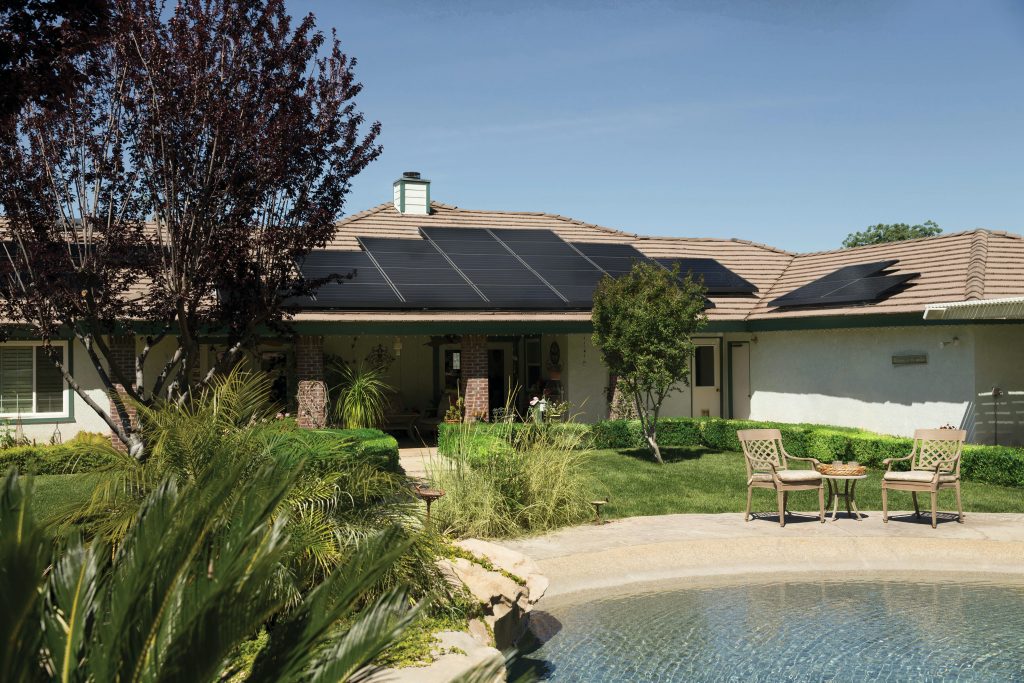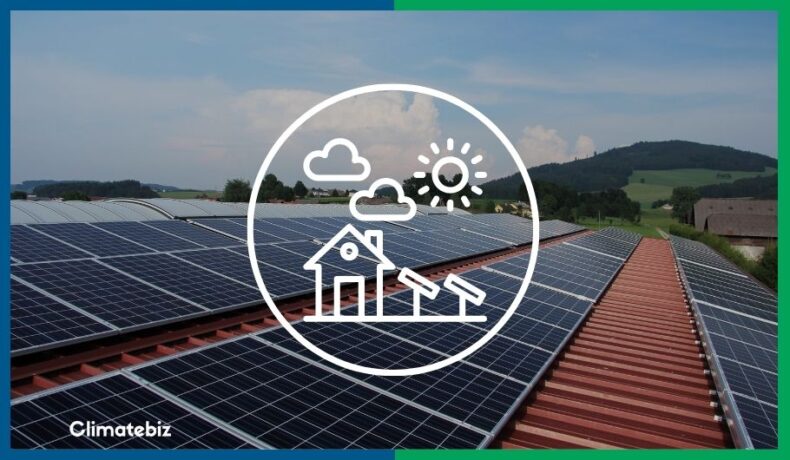Rising energy prices, inflation, the move to electric vehicles — the cost of living just never stops going up! Solar might work, but how to work out your solar panel system size?
Given these costs, solar on the roof of your house, barn or garden may make sense. The cost savings can be significant, and your property will increase in value.
So, what size should your solar panel system be?
In this article, you’ll learn how to crunch the numbers on solar panel system size. After that, you might be ready to build your own system!
Table of Contents
Step 1: Working Out Your Energy Needs

Part 1: Sum Up Your Annual Energy Usage
First, you need to look at your energy usage. This could be through summing up monthly energy bills, logging into your smart meter, or phoning your energy company.
Since solar panel energy output varies seasonally, it’s worth looking at your usage over an entire year.
Part 2: Include A Battery
Next, consider whether you’d like to install a battery to assist your solar system. This depends on your financial position, local or state incentives, and how your energy is billed.
A battery can help you store your solar energy during the day and release it at night. This saves you money because solar energy is usually cheaper than energy from the grid.
For simplicity’s sake, let’s assume a battery is not suitable for your situation.
Part 3: Think About Your Daily Energy Pattern: Home Edition
The third step is to consider how your home or business uses energy.
Example: Home Energy Usage
Are you out of the house all day? You likely use most of your energy in the morning, before you leave for work, and in the evening, when you return. Your home’s daily energy consumption will look “U” shaped, as shown in the chart below.
The chart shows the energy usage throughout the day:
- Morning peaks as people have breakfast and showers
- Flat period during the daytime
- Evening dinnertime peak as people have dinner and relax.
If this is your daytime pattern, it’s best to size your solar system at about 30% of your annual energy consumption. For example, if your annual energy consumption is 16,000 kWh, your solar system should supply 30% of this, i.e. 0.3 x 16,000 = 4,800 kWh.
Part 3: Think About Your Daily Energy Pattern: Business Edition
Example: Business
If you’re looking at solar for a business, your daily consumption is probably shaped like a horseshoe. It may also be flat throughout the day and night.
You might be able to get your hourly meter data from your energy company if you have a smart meter.
Or you can consider your work patterns and what hours your equipment is running.
For example, a garage or an office will have a horseshoe-shaped curve because your staff will arrive in the morning, use energy throughout the day, and leave in the evening.
However, another business might have a flat curve. For example, a chicken shed would have a flat curve since the heaters run 24 hours per day.
Below is an example of a business’s energy usage curve. Alongside the energy usage is the solar output from the previous example.
A more extensive solar system is better if you run a business operating regular business hours because you can use the energy for your business. You should aim to meet 50 or 60% of the annual energy that your business needs. This should be higher if your company uses electric heating or air-conditioning.
For example, if your annual energy consumption is 50,000 kWh, your solar system should supply 60% of this, i.e. 0.6 x 50,000 = 30,000 kWh.
Step 2: What Size Should My Solar System Be?
The bottom line of any solar system is how much energy that system will produce. Kilowatt-hour (“kWh”) is the primary energy unit — you may have seen it on your monthly energy bill. Likewise, solar arrays generate energy, which is metered in kWh.
Rough Estimate: Peak Sun Hours
The Peak Sun Hour method is a simple way of quickly working out how large your array will be; in other words, the system’s power output.
To calculate the system’s power output, first, look up the location’s peak sun hours (“PSH”). Next, take the energy output of the array in kWh and divide it by the peak sun hours for the year.
The basic equation is:
Solar System Power Output (in kW) = Annual Energy (in kWh) / (PSH hours x 365 days)
Working Example: Utah
Firstly, you look up the peak sun hours for Utah off this list. You’ll find that the PSH for Utah is 5.4 hours.
Next, you take the energy contribution from Step 1 (see above). Let’s say you decide that you want 4,800 kWh of annual energy from your solar system.
Bringing it all together, you can calculate the power of your solar system.
Solar system power output (kW) = 4,800 kWh / (5.4 x 365) = 2.44 kW
In this case, you would need a 2.44 kW, or 2440 Watt system to supply the 4,800 kWh per year.
Getting Fancy: Climate Biz Solar Calculator
You can also calculate solar array energy output with a more precise method. Fortunately for you, we have an online calculator that can assist with the grunt work!
Play around with the inputs until you have a system delivering the annual energy you want. You can then calculate the solar panel system size.
Step 3: How Many Solar Panels Will My Solar System have?

The next step is to calculate how many solar panels you need.
Part 1: Pick Your Solar Panel Brand And Model
The first step is to decide on the brand and model of the panel you want to buy. As long as you stick with trusted big brands, the best method is to choose on cost.
Phone a few panel suppliers and ask for both the cost and power rating of the panel.
The next step is to work out your cost per watt. To calculate this, divide the cost of the panel by the power.
You can then choose the lowest cost per watt panel. You may also want to choose based on the look of the panels; different materials and brands offer different looks.
| Solar Panel Brand | Power Rating (Watts) | Panel Cost ($) | Cost per Watt ($) |
|---|---|---|---|
| JA Solar | 400 | $1064 | $2.66 |
| Risen | 345 | $793 | $2.30 |
| Q CELLS | 450 | $1215 | $2.70 |
| Suntech | 350 | $886 | $2.53 |
| Tesla | 400 | $1088 | $2.72 |
The above table shows a range of different panels and prices. If you pick just on cost per watt, you’ll select the Risen 345 Watt panel.
Part 2: Calculate Your Total Number of Panels
To calculate your total number of panels, you divide the solar system power (in watts) by the panel power (also in watts).
Working Example: Utah
Taking our earlier example of Utah, you want a solar system with a 2440-Watt power rating.
You phone around and get cost and power data. You then buy a 345 Watt panel, which has the best cost per watt.
To calculate the number of panels you need, divide the system power rating by the panel power rating.
Total number of solar panels = Total system power/panel power
Total number of solar panels = 2440 Watts / 345 Watts = 7.07 panels
Rounding down, you buy 7 panels, each rated at 345 Watts.
How Much Roof Space Will My Solar System Take Up?
The average solar panel has an area of about 20ft². To calculate the total roof space your solar system needs, multiply the number of panels by 20.
Using our Utah example, the total roof space used by the solar system = 20 x 7 = 140ft².
Final Thoughts
Energy usage is unique: every house, business, and person uses it differently. Your decision to spend money on a solar system will depend on personal, financial, tax, energy, and aesthetic factors.
You can calculate your own solar panel system size with the methods outlined in this article.
Before you spend money on solar, you may want to calculate your returns using your utility rates. You may also decide to install a battery to store your solar energy.
If you’re considering solar for your business, it’s worth clarifying what tax benefits are available.

